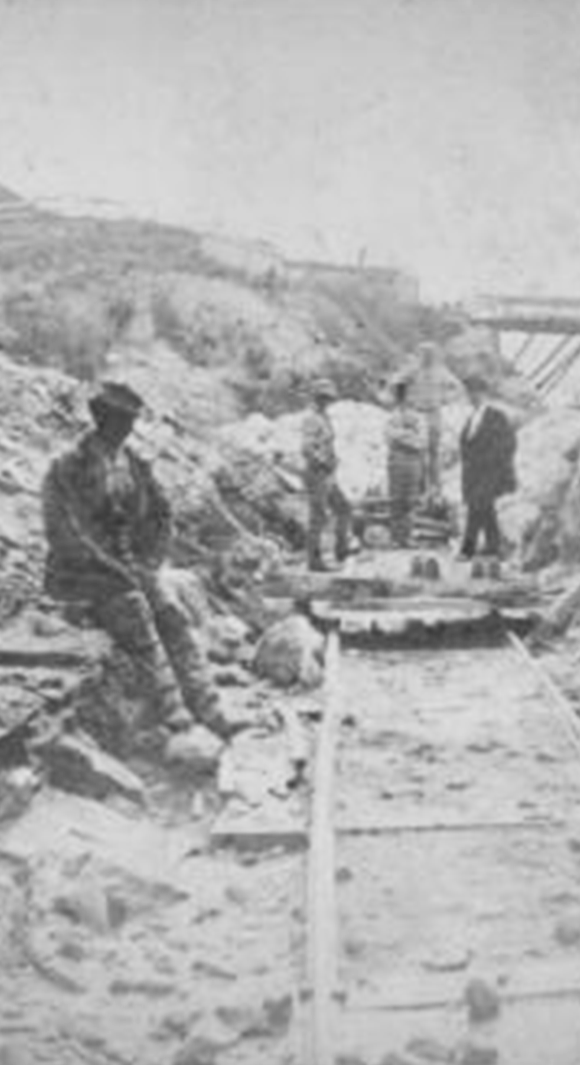Hudson Quarry
work
The labor of incarcerated people is built into the work of Sing Sing Prison.
In 1825, Auburn State Prison Superintendent Elam Lynds selected the 130-acre Mount Pleasant site of the new Sing Sing Prison. By May of that year, Lynds brought 114 men from Auburn to Mount Pleasant to begin the construction of Sing Sing Prison. They completed 69 cells by the end of the year; construction continued until 1828, with 800 cells built almost entirely by incarcerated individuals.
At the beginning of the 19th century, the Auburn System was becoming an increasingly popular penal method. Developed by Auburn prison officials Elam Lynds and John D. Cray, this system utilized a combination of strict, brutal discipline, forced labor, complete silence, and total surveillance. While in theory the Auburn System meant to help reform the individual, in practice, it became a means to control the incarcerated population and occasionally produce a profit for the state.
The marble stones cut by incarcerated men were the primary building blocks of the Sing Sing prison complex. The distinct color and physical contours of the rocks were a hallmark of the original cellblock as well as a hospital, a kitchen, a chapel and the female prison at Mount Pleasant.
The state sold Sing Sing marble to builders at lower prices due to the forced labor of incarcerated men. Several landmark buildings such as the New York State Capitol Building, New York University, Grace Church on Broadway and Lyndhurst near Tarrytown, NY used Sing Sing marble.
The significance of the marble to this land is rooted in the name Sing Sing. The Mount Pleasant site was located near the village of Sing Sing, named after the Sintsinck Native American words “sint sinck” meaning “stone on stone.” The prison project, originally called Mt. Pleasant Prison, took on the name Sing Sing in 1825, and 76 years after that, in 1901, the village changed its name to Ossining to disassociate itself from the brutal reputation of the prison. The word “Ossining” means “a stony place” in the Sintsinck language.
The controversial practice of prison labor continues to this day. Around the country, incarcerated people fight wildfires, tend crops, build furniture, repair school buses, among many other tasks.
In New York state, prison labor produces products for state use and sale, such as license plates and hand sanitizer used during the COVID-19 pandemic. For their work, incarcerated people earn an average of 25 cents per hour before taxes, fees and court costs. In seven states, they are not paid at all, a policy justified by reference to the 13th Amendment to the US Constitution: “Neither slavery nor involuntary servitude, except as a punishment for crime whereof the party shall have been duly convicted, shall exist within the United States.”
Further Reading:
- +"U.S. prison labor programs violate fundamental human rights, new report finds" by University of Chicago Law School
- +"Captive Labor: Stories of Involuntary Servitude" by ACLU
- +"Ava DuVernay’s 13th Reframes American History" by Juleyka Lantigua-Williams
- +"10 Companies that Use Prison Labor to Rake in Profits" by Andrew Moran
- +"How NY Prison 'Slave Labor' Powers A $50 Million Manufacturing Enterprise" by JB Nicholas
- +"Increasing Prison Wages to Dollars Just Makes Sense" by Walter Ball


